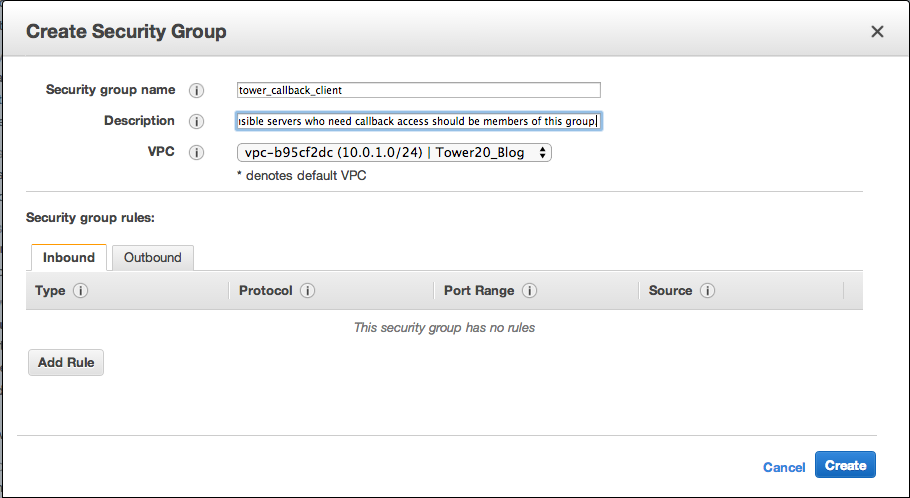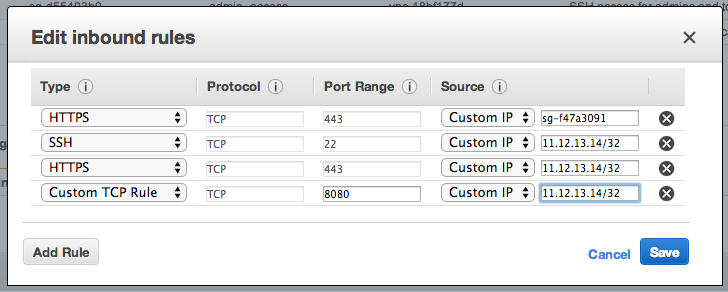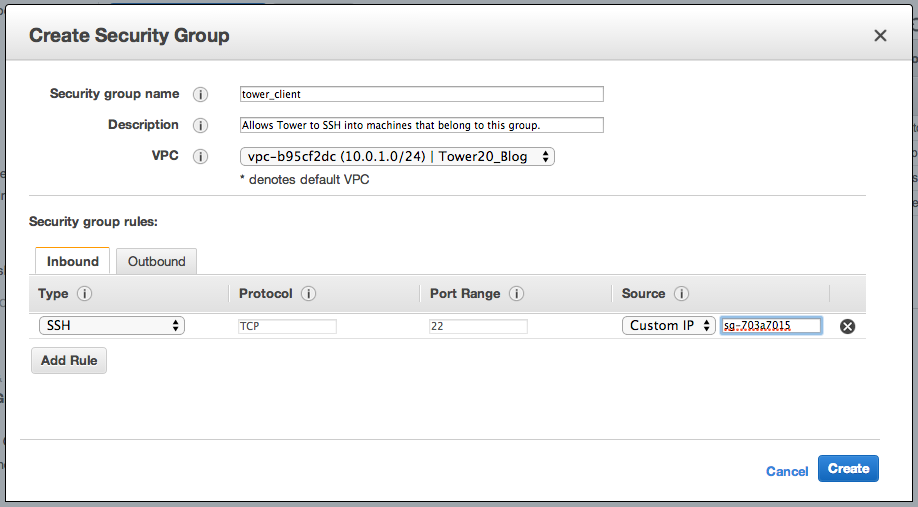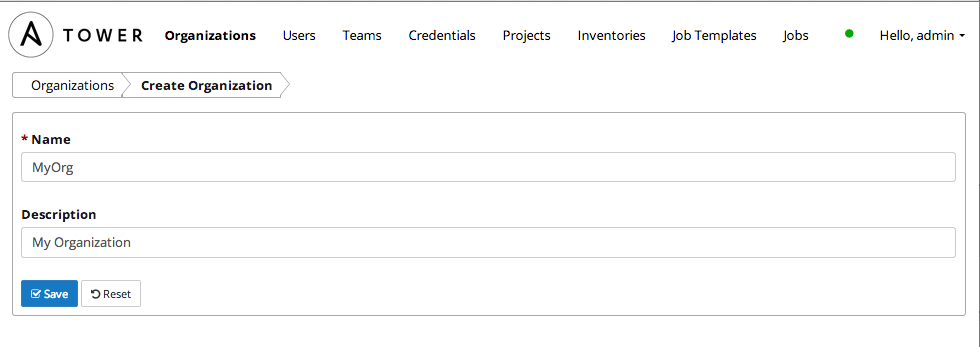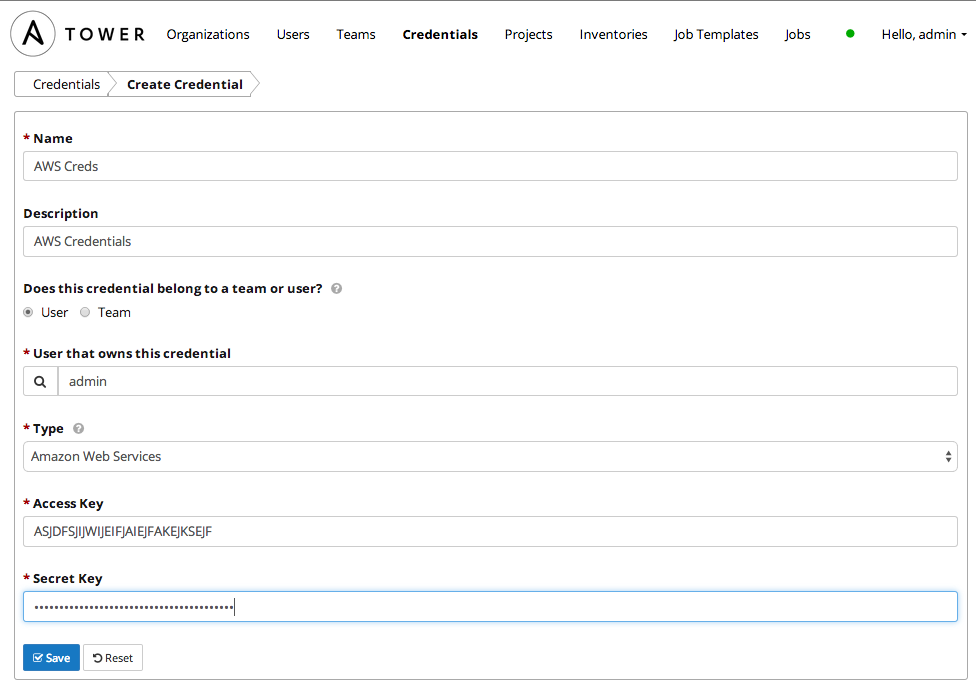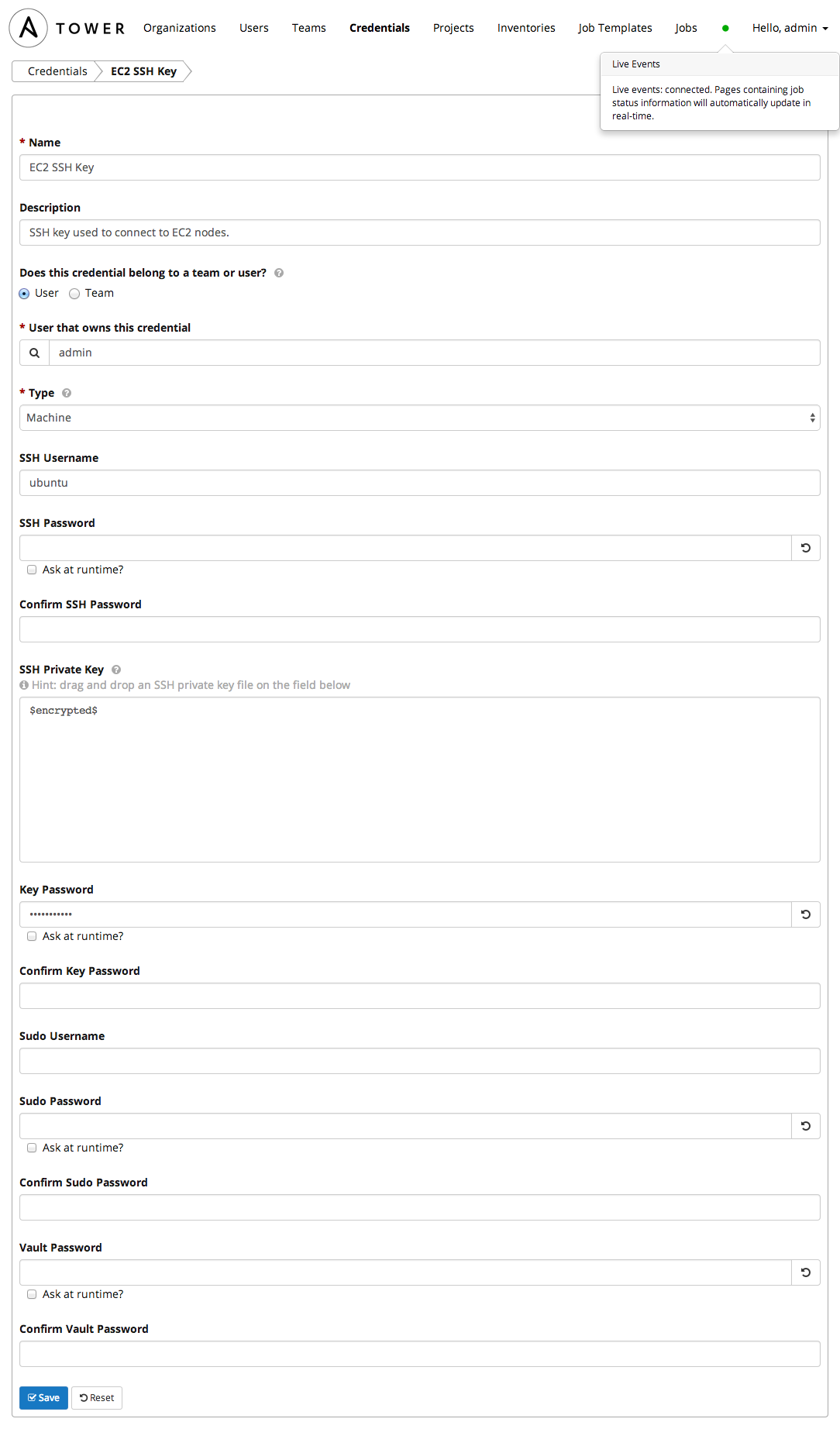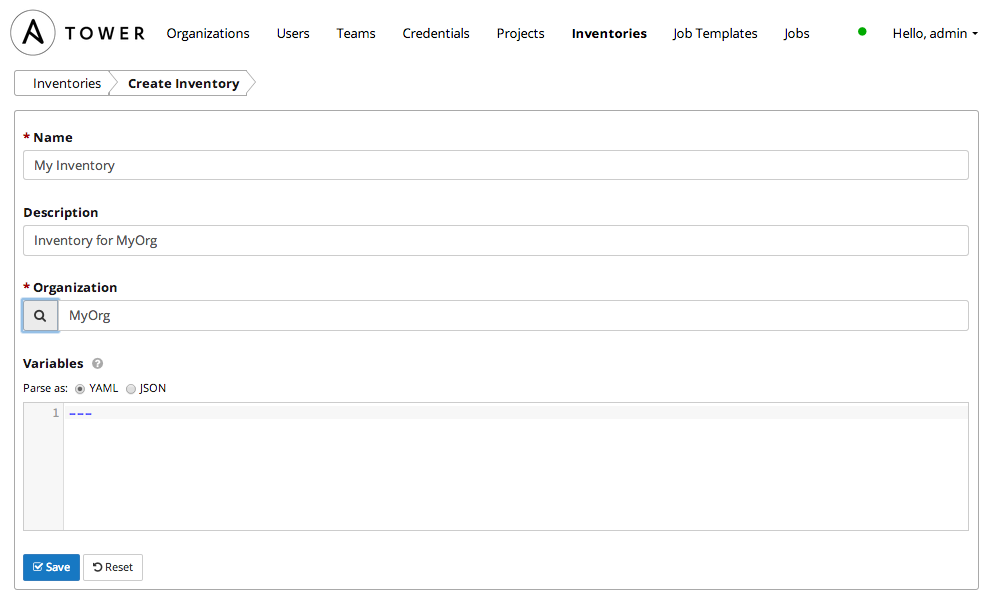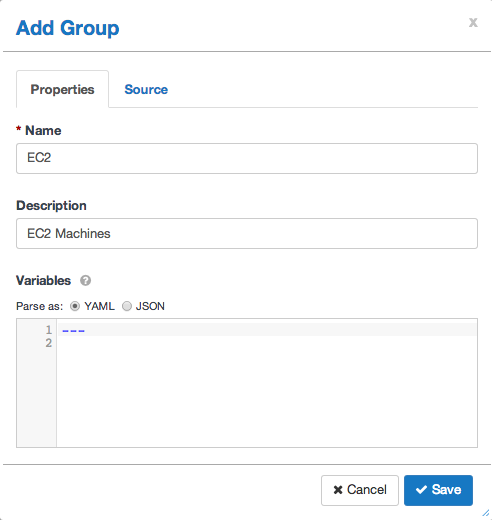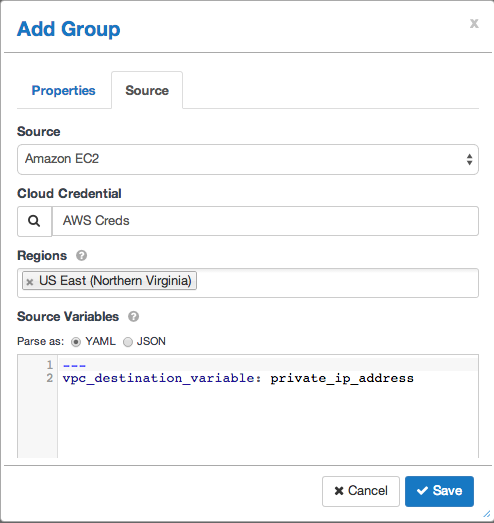This is for demonstration purposes only. Security group rules presented here are not recommended for production use. Please adapt the security group rules to meet your organizational needs.
Most folks are using VPCs in their AWS environments these days, if not, we'd recommend you create one for the purposes of this demo. Either way make note of the VPC ID, as we'll use it later.
Create or use existing subnets in the above VPC. These will be used for the instances you provision. For testing purposes, the Subnets should be able to route to the Internet. Make note of Subnet IDs.
Create or use an existing ec2 keypair. Tower will use this to ssh into your instances.
In the EC2 console, we need to create 3 security groups :
- one for the instances that will be using Tower's call back feature
- one for the Tower server itself that allows you to SSH to Tower and use Tower's web interface.
- one for the instances that Tower will SSH into.
####Tower Callback Client Security Group
This is a group without any rules. It will be assigned to the Launch Configuration of the instances that require callback access. Make a note of the group ID after it is created.
####Tower Server Security Group Create a custom security group for your Tower instance to live in. I give myself access to SSH, HTTPS, and 8080, and I give members of the security group I created above access to HTTPS as well. Make a note of the group ID after it is created.
The security group should allow you to SSH into the Tower instance, have HTTPS access to the Tower instances, and should be reachable by HTTPS by your managed instances for the callback feature to work.
This group is assigned to the instances that are managed by Tower. It allows Tower to SSH into the instances.
Launch a moderately sized EC2 instance -- 4GB or more memory. Make sure it is a being launched into the VPC referenced above and is member of the Tower Server Security Group you created.
The next step is to install Ansible and Ansible Tower onto your newly launched instance. You can find installation instructions here. Once you've setup and logged into your Tower instance, proceed to the next step.
Extra bonus points to the person that creates an Ansible playbook to provision the above!
Now open your browser and go to https://myinstance.compute-1.amazonaws.com and login to Tower with admin** as the user and password** as the passsword. You'll be prompted to paste your license in there.
First, you'll want to create an Organization, typically named after the Organization you're working for. In this case, we'll call our organization MyOrg.
We don't need to create any additional users or teams for the purposes of this demo.
The next step is to configure some credentials for Tower. Click on the Credentials tab and then click on the + icon to add a new set of credentials.
Now we'll configure a set of credentials that Tower will use to SSH to the instances. These must be the ec2 keypair you created earlier.
Click on the Inventory tab and click on the + icon to add a new inventory and fill out that form as below:
Click on the newly created Inventory and click the + symbol to add a new group. Fill out the form as below:
Click the Source tab and fill out the form as below. Make sure to set the Source Variables:
---
vpc_destination_variable: private_ip_address
